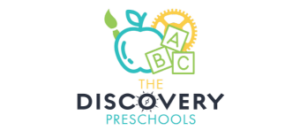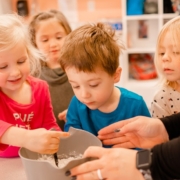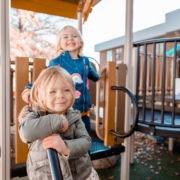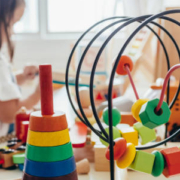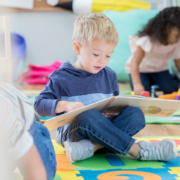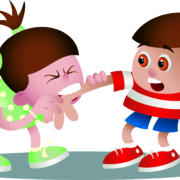Newtown Discovery PreSchool is expanding!
/0 Comments/in About Us, blogs, Preschool Ponderings, Uncategorized /by marketingadminNewtown Discovery Preschool embarks on an exciting journey of expansion. Educators, and little ones alike can look forward to a range of new and improved facilities. The preschool’s commitment to providing a safe, stimulating, and developmentally enriching environment remains unwavering.
Here are five eagerly awaited features that will redefine the Newtown Discovery Preschool experience.
- Revamped Front Desk Operations for Enhanced Security:
- One of the most crucial aspects of the preschool experience is safety. The expansion brings with it a brand new front desk operation, incorporating advanced security measures to ensure the well-being of every child. The enhanced setup not only prioritizes security but also streamlines administrative processes for a smoother and more efficient experience during drop-off and pick-up times.
2 . Waddler-Exclusive Play Area:
- Catering to the unique needs and developmental milestones of our waddlers, the expansion introduces a dedicated play area exclusively designed for this age group. The waddler-only play area is thoughtfully crafted to encourage motor skill development, sensory exploration, and social interaction, providing a safe and enjoyable space for our youngest learners to thrive.
- Specialized Classrooms for Infants, Waddlers, and Toddlers:
- Recognizing the diverse developmental stages of infants, waddlers, and toddlers, Newtown Discovery Preschool is introducing eight new classrooms tailored to meet the specific needs of each age group. These purposefully designed spaces will support age-appropriate activities, fostering a nurturing environment that promotes early learning and development.
- Innovative Playground Addition:
- Play is an integral part of early childhood development, and the expanded Newtown Discovery Preschool will feature an innovative playground addition. This new outdoor space will offer a range of age-appropriate equipment and activities, encouraging physical exercise, imaginative play, and social interaction. The playground will be a hub of fun and learning, reinforcing the importance of play in a child’s holistic development.
- Efficient Parking Lot Design for Seamless Drop-Off and Pick-Up:
- Recognizing the hustle and bustle of drop-off and pick-up times, the expansion includes a redesigned parking lot to enhance efficiency and convenience. The new layout ensures smoother traffic flow, optimized parking spaces, and improved organization, making the daily routine of parents and caregivers more streamlined and stress-free.
Our Expansion is not just about adding physical space; it’s a holistic commitment to creating an environment where every child can thrive and reach their full potential. From heightened security measures to age-specific play areas and innovative classrooms, each element is meticulously designed to contribute to the overall growth and well-being of the preschool community. As the expansion unfolds, parents and children can anticipate a future filled with exciting opportunities for learning, exploration, and joyful moments at Newtown Discovery Preschool.
Our two main locations are in Newtown and Warrington and we support the Doylestown area.
How to Manage Parental Anxiety on the First Day of School
/0 Comments/in blogs, Preschool Education, Preschool Ponderings /by marketingadminHow to Select Toys for Toddlers and Preschoolers
/0 Comments/in blogs, Preschool Education, Preschool Ponderings /by marketingadminHow to Select Books for Your Toddlers & Preschoolers
/0 Comments/in blogs, Preschool Education, Preschool Ponderings /by marketingadminHow to Help Your Preschooler Transition to a New Classroom
/0 Comments/in blogs, Preschool Education, Preschool Ponderings /by marketingadminWhat Do You Do When Your Toddler Bites?
/0 Comments/in blogs, Preschool Ponderings /by marketingadmin
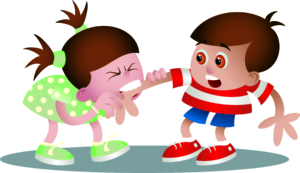
Dealing with toddlers who bite can be challenging, but it’s essential to address the behavior promptly and consistently. Here are some steps you can take to manage and prevent biting in toddlers:
- Stay calm and react quickly: If a toddler bites, respond calmly but firmly. Avoid yelling or using harsh language, as this may escalate the situation. Remove the child from the situation immediately to prevent further harm to others.
- Offer comfort and empathy: After removing the child from the situation, comfort them and help them understand their emotions. Toddlers may bite out of frustration, anger, or even excitement, but they often lack the language skills to express their feelings appropriately.
- Teach appropriate behavior: As toddlers are still learning to communicate effectively, help them express their emotions through words rather than biting. Use simple language to explain why biting is not acceptable and provide alternative ways for them to express themselves such as using words, pointing, or showing emotions through facial expressions.
- Set boundaries: Consistently enforce clear boundaries and rules. Make sure the child understands that biting is not allowed, and establish consequences for the behavior. These consequences should be age-appropriate such as temporarily removing a favorite toy.
- Supervise interactions: Keep a close eye on the toddler during playtime or interactions with other children. If you notice signs of frustration or tension building up, intervene proactively to prevent a biting incident.
- Encourage positive interactions: Praise and reinforce positive behaviors such as sharing, taking turns, and using words to express emotions. Positive reinforcement can be a powerful tool to encourage appropriate behavior.
- Model appropriate behavior: Children learn by observing their caregivers and other adults. Model respectful and non-violent behavior, as they will often mimic what they see.
- Stay consistent: Address the biting behavior consistently and avoid confusing the child by sending mixed messages. Be patient, as it may take time for the behavior to change.
- Consult with professionals: If the biting behavior persists despite consistent efforts, consider seeking advice from a pediatrician, child psychologist, or behavioral specialist. They can provide additional strategies and guidance tailored to your child’s specific needs.
Remember, biting is a common behavior in toddlers, but with patience, understanding, and consistent guidance, most children outgrow this behavior as they develop better communication and emotional regulation skills.
Our two main locations are in Newtown and Warrington and we support the Doylestown area.
What to Say Instead of “No” When Redirecting Your Preschooler
/0 Comments/in blogs, Preschool Education, Preschool Ponderings, Uncategorized /by marketingadminWhat is Neurodiversity, and How Do We Promote it in Preschool?
/0 Comments/in blogs, Curriculum, Preschool Education, Preschool Ponderings /by marketingadminHow Chores at Home Help Reach Educational Goals
/0 Comments/in blogs, Preschool Education, Preschool Ponderings /by marketingadminLocations
27 Blacksmith Road
Newtown, PA 18940
847 Easton Road
Warrington, PA 18976
Contact Us
(267) 753-6040
enrollment@thediscoverypreschools.com
